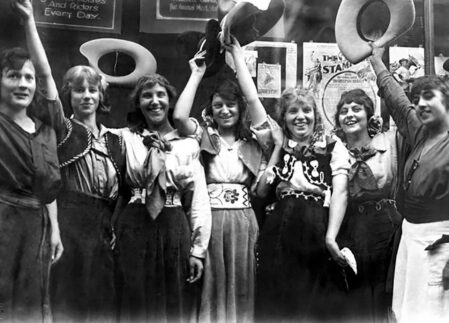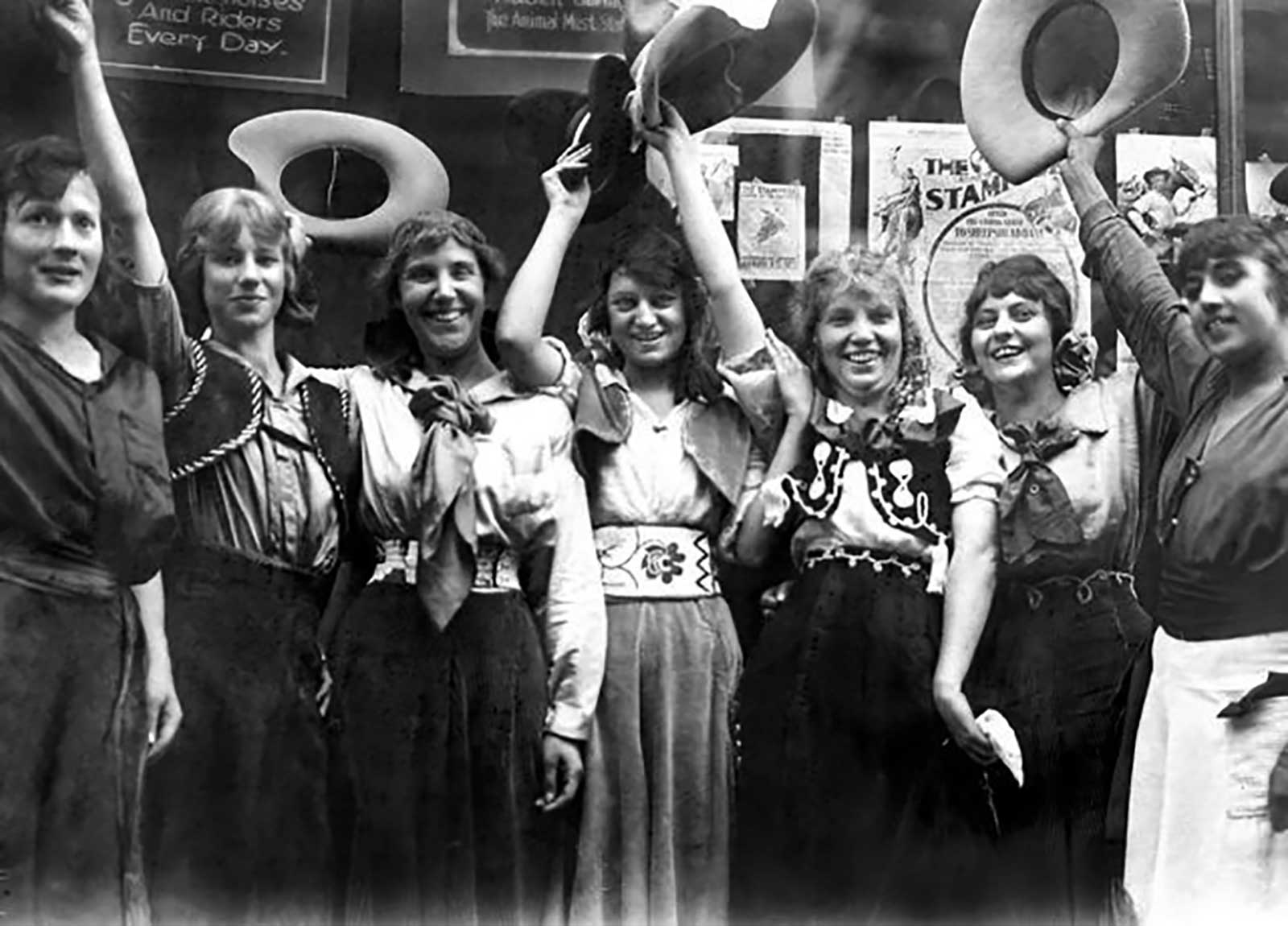Women’s Work Making Montana
By Mary Murphy, Professor of History, Montana State University
Montana women are nothing if not resourceful. Since the first encounters between indigenous peoples and white settlers, women’s work has shaped this place we call Montana. For the most part, we think of the Treasure State as a land of cowboys and ranchers, miners and copper kings, farmers and capitalists. Women’s work in this land of male-dominated resource extraction has often been often invisible.
Yet look at any town library, hospital, school, swimming pool, or park and it’s likely that women’s work caused it to be. Women’s paid and unpaid work fueled community building in Montana.
Well-paying jobs for women were as scarce as hen’s teeth in the state. Until well into the 20th century the most common work for women was domestic servant. Long hours and low pay were the common denominator whether a woman worked in a private home, a boarding house, or a hotel. Waitress, cook, stenographer, seamstress, teacher were other common occupations. While teacher was considered a professional position, it was difficult to turn into a career. In 1914 Butte teacher Adelaide Rowe eloped with her sweetheart, Theodore Pilger. They hid their marriage for three years so she could keep her job. Most school districts in the state banned married women from teaching, a policy not overturned until the 1964 Civil Rights Act.
As white-collar work opened up for women, they eagerly mastered new technology such as typewriters and switchboards. The first union of telephone operators in the U.S. was formed in Butte. Merle Egan, a skilled operator from Helena, took her expertise to the U.S. Signal Corps in World War I. She later led the campaign to get those servicewomen their veterans’ status, a campaign that only proved successful in 1977.
While service and white collar work were the most common occupations for women, there were many Montana women who earned a living in entrepreneurial and creative ways. Crusading journalists like Mary O’Neill, who wrote for the Montana Suffrage News, Gretchen Billings, editor of the People’s Voice, and Minnie Eder Two Shoes, columnist for Wotanin Wowapi of Poplar gave voice to underrepresented Montanans.
Other women writers turned to memoir and fiction. Butte’s Mary Maclane took the proceeds from her scandalous 1902 memoir, The Story of Mary Maclane, and headed for a bohemian life in Greenwich Village. Whitefish’s Dorothy Johnson saw three of her numerous western stories turned into Hollywood films, the most famous of which was The Man Who Shot Liberty Valance. Artists such as Jessie Wilber and Frances Senska not only introduced modern art to Montana through their own pieces but inspired generations of new artists in their work as professors of art at Montana State College.
Women earned their living in a variety of health-related fields. In 1927 Susie Walking Bear became the first registered nurse of Crow descent. As she worked across Indian country, she documented the dismal conditions on Montana reservations that threatened native peoples’ health and welfare and became a healthcare advocate at the national level. Female nurses and doctors worked in Montana’s cities, and midwives birthed thousands of babies across the state, often taking their pay in barter.
Many women turned their domestic skills into paid work. Some became professional Home Demonstration Agents who worked for the Extension Service. They taught scientific methods of food preservation, form-fitted sewing, and practical crafts to women across the state. Harriet Cushman became Montana’s poultry specialist in 1922. She traveled the state to teach improved methods of breeding, culling, egg and bird grading, poultry housing, and poultry health. It would be hard to overestimate the importance of a healthy poultry flock to Montana farm families. Egg and butter money was often the only steady source cash throughout the year until harvest. In the 1920s Cushman initiated the nation’s first wholesale turkey cooperatives, garnering national markets for Montana turkeys. And it was no small business. In 1933 Cushman helped grade and pack five train cars with 144,000 pounds of turkey destined for Christmas dinners across the country. Raising poultry was commonly women’s work. Women’s turkey money helped families in numerous ways. In Winter Wheat, Montana author Mildred Walker’s classic novel about dryland farming in north central Montana, Anna Webb raised turkeys to help pay her daughter’s college expenses, hoping she’d have life of less toil than her own.
Women augmented their family income through selling garden produce, as well as eggs and butter, taking in laundry, sewing clothing for neighbors who didn’t have their own sewing machine. They were flexible and opportunistic. During Prohibition, some became bootleggers. During the Great Depression they got work when they could on New Deal work programs: cooking, sewing, cataloging library books. In boomtowns they ran boarding houses; they cooked in logging camps and for threshing crews, taking pride in their culinary reputations.
Some young ranch women parlayed their skills into riding in Wild West shows and rodeos. Fannie Sperry Steel became the “Lady Bucking Horse Champion of the World” in the 1912 Calgary Stampede and repeated the feat the following year. Alice and Marge Greenough of Red Lodge were rodeo champions who traveled the world with their own sewing machine to make their outfits. Alice and her husband Ray Orr later formed their own rodeo company.
Toughness, resilience, creativity, imagination, and making-do have characterized women’s work in Montana. When they weren’t working to feed and clothe their own families, they were working to take care of their larger communities. In hundreds of women’s clubs and voluntary associations across the state, from small rural home demonstration clubs like the “Calico Cut-Ups” or garden clubs like Butte’s “Plant & Pray,” Montana women worked to beautify their communities and improve the health, education, and welfare of all Montanans.


